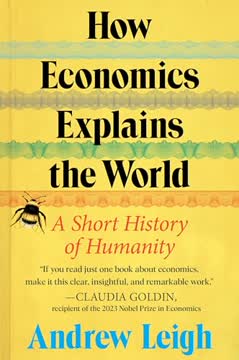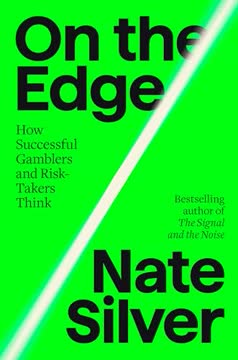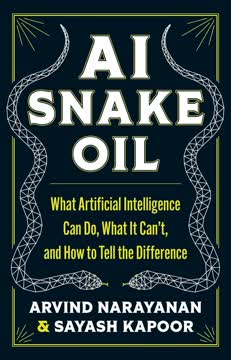Key Takeaways
1. Cold War II: A New Era Defined by China
The next two decades are going to be defined by whether the United States can avoid a war with China, a conflict that neither country views as an optional or desired “war of choice,” but one that nonetheless looms so clearly and whose stakes are so well-defined that the possibility of such a war will hang over nearly every engagement between the two great powers for the next decade.
A New Geopolitical Reality. The 21st century's defining challenge is the strategic competition between the United States and China. This rivalry, termed "Cold War II," differs from its predecessor but carries similar high stakes. The potential for conflict, particularly over Taiwan, casts a shadow over all interactions between the two powers.
Avoiding a Hot War. The primary goal for the U.S. must be to avert a direct military confrontation with China. This requires a delicate balancing act: deterring aggression while avoiding actions that could be perceived as escalatory. The focus should be on maximizing U.S. leverage and navigating this period with strength and strategic foresight.
Beyond Zero-Sum. Unlike the ideological battle of the first Cold War, the U.S. and China are deeply intertwined economically. Cooperation on issues like climate change and nuclear non-proliferation is still necessary. The challenge lies in managing competition while finding areas for collaboration.
2. The Century of Humiliation Drives China's Ambitions
What emerges across the centuries is a recurring theme of mutual non-comprehension and deep suspicion, often followed by periods of exaggerated hopes and expectations that then collapse in the face of fundamentally different political and strategic imperatives.
Historical Context. China's foreign policy is deeply rooted in its history, particularly the "Century of Humiliation" from the mid-19th to mid-20th centuries. This period of foreign intervention and internal strife fuels China's desire for national rejuvenation and a return to global prominence.
National Rejuvenation. Xi Jinping has made "national rejuvenation" a central theme of his leadership. This ambition encompasses economic prosperity, military strength, and the restoration of China's perceived rightful place in the world order. Understanding this historical context is crucial for interpreting China's actions.
A Different Worldview. Unlike the U.S., which was founded on Enlightenment ideals, China's civilization developed largely in isolation. This has fostered a self-centered worldview, with China viewing itself as the center of civilization. This difference in perspective often leads to misunderstandings and miscalculations in U.S.-China relations.
3. Taiwan: The Unfinished Business and Geopolitical Flashpoint
The policy of the United States toward the PRC and the Republic of China is really the story of four US presidents: Franklin Delano Roosevelt, Harry Truman, Richard Nixon, and Jimmy Carter.
A Complex Triangle. The relationship between the U.S., China, and Taiwan is a complex balancing act. Taiwan's status as a self-governing democracy claimed by China as a renegade province remains a major point of contention. This issue is at the heart of the potential for conflict between the U.S. and China.
Strategic Importance. Taiwan's location and its advanced semiconductor industry make it a critical geopolitical asset. Control of Taiwan would give China a strategic advantage in the Pacific and control of a vital global supply chain. This makes the defense of Taiwan a key U.S. interest.
The One China Policy. The U.S. maintains a policy of "strategic ambiguity" regarding Taiwan, acknowledging China's position that there is only one China but not endorsing it. This delicate balance is intended to deter both Chinese aggression and Taiwanese moves towards formal independence.
4. America's Distractions Have Enabled China's Rise
We are trying to do too many things in too many places and not focusing, intensely, on what should be the main priority of our foreign and domestic policy: winning.
Lost Focus. For much of the 21st century, the U.S. has been distracted by wars in the Middle East and other global crises. This has allowed China to rise economically and militarily, often unchallenged. A renewed focus on the China challenge is essential.
Missed Opportunities. The U.S. has often prioritized short-term economic gains over long-term strategic considerations in its relationship with China. This has led to the transfer of wealth and technology that has fueled China's rise. A more strategic approach is needed.
The Need for Prioritization. The U.S. must prioritize its foreign and domestic policies to focus on countering China. This requires making difficult choices and scaling back commitments in other areas to concentrate resources on this critical challenge.
5. China's Strengths Mask Deep Vulnerabilities
China’s period as a global superpower might not last a century—it might not even endure a generation.
Demographic Time Bomb. China faces a looming demographic crisis due to its one-child policy and declining birth rates. This will lead to a shrinking workforce and an aging population, placing a strain on its economy and social safety net.
Economic Imbalances. China's economic growth has been fueled by debt and unsustainable practices. Its real estate market is unstable, and its reliance on exports makes it vulnerable to global economic shocks. These imbalances could undermine its long-term economic prospects.
Internal Repression. Xi Jinping's authoritarian policies and crackdowns on dissent have created internal tensions and stifled innovation. This repression could ultimately weaken China's economy and political system.
6. America's Untapped Power: Innovation and Alliances
The unrivaled dominance of the US technology and financial sectors is a source of unprecedented leverage for resolving America’s global challenges and securing the nation’s economic and geopolitical future for future generations.
Innovation Advantage. The U.S. remains a global leader in innovation, particularly in technology and finance. This advantage provides significant leverage for addressing global challenges and securing its future.
Strength in Alliances. The U.S. has a network of strong alliances with like-minded democracies around the world. These alliances provide a crucial counterweight to China's growing influence and a foundation for collective action.
Leveraging Economic Power. The U.S. has significant economic leverage, from its dominance in technology and finance to the strength of the U.S. dollar. This leverage can be used to advance its interests and counter China's economic influence.
7. Deterrence is Key: Making China Think Twice
Every morning, we want Xi to wake up and think, “Today’s not the day to invade Taiwan,” but also to imagine that tomorrow could be—after all, we don’t want him to undertake a rash action, even if he believes the chances of success are low, because he has realized that the window to take Taiwan is about to close permanently.
The Art of Deterrence. The U.S. must deter China from taking aggressive action, particularly against Taiwan. This requires a strategy that combines military strength, economic pressure, and diplomatic engagement. The goal is to make the costs of aggression outweigh the potential benefits.
Strategic Ambiguity. Maintaining a degree of uncertainty about the U.S. response to a Chinese attack on Taiwan can be a powerful deterrent. This keeps China guessing and raises the stakes of any potential invasion.
Building a Credible Defense. Strengthening Taiwan's defenses and increasing the U.S. military presence in the region are crucial for deterring Chinese aggression. A strong and capable defense makes any invasion attempt more costly and risky.
8. Reframe Global Engagement: Focus on China
We are trying to do too many things in too many places and not focusing, intensely, on what should be the main priority of our foreign and domestic policy: winning.
Prioritize the China Challenge. The U.S. must refocus its foreign policy around countering the rise of China. This requires making difficult choices and scaling back commitments in other areas to concentrate resources on this critical challenge.
Reassessing Global Entanglements. The U.S. should reevaluate its commitments in Europe, the Middle East, and Latin America through the lens of the China challenge. This means prioritizing actions that support its ability to compete with China and scaling back those that distract from that goal.
Understanding Adversary Motivations. A key to success is understanding the motivations and goals of its adversaries. This requires careful analysis of their political systems, economic drivers, and strategic thinking.
9. Defend Innovation: Secure Supply Chains and IP
The weapons that are required to win in this new age of great power competition are not just people, drones, missiles, ships, and aircraft but sanctions and export controls, smart trade policy, effective domestic industrial policy, software, and hardware.
Protecting Intellectual Property. The U.S. must aggressively protect its intellectual property from theft by China. This requires strengthening cybersecurity, enforcing trade laws, and imposing costs on companies that benefit from stolen technology.
Securing Critical Supply Chains. The U.S. must reduce its reliance on China for critical minerals and other essential goods. This requires diversifying supply chains, investing in domestic production, and working with allies to secure access to resources.
Investing in Key Technologies. The U.S. must prioritize investment in emerging technologies like AI, biotech, and green tech. This requires government funding for research and development, as well as incentives for private sector innovation.
10. Say Yes to Friends: Strengthen Alliances and Economic Ties
We have to make it easier for our friends to say yes to countering China.
Building a United Front. The U.S. must strengthen its alliances with like-minded democracies around the world. This requires building trust, coordinating policies, and providing support to allies facing Chinese pressure.
Economic Security. The U.S. should work with allies to create a new economic security alliance that can respond to Chinese economic coercion. This alliance would provide a framework for mutual support and collective action.
Promoting Shared Values. The U.S. should promote its values of democracy, human rights, and the rule of law as a counterweight to China's authoritarian model. This requires supporting civil society, promoting free speech, and holding China accountable for its human rights abuses.
Last updated:
FAQ
What’s World on the Brink: How America Can Beat China in the Race for the Twenty-First Century by Dmitri Alperovitch about?
- Geopolitical rivalry focus: The book analyzes the escalating competition between the United States and China, framing it as "Cold War II" with Taiwan as the central flashpoint.
- Comprehensive strategy: Alperovitch combines historical context, current military and economic realities, and policy recommendations to outline how America can maintain global leadership and avoid catastrophic conflict.
- Key domains: The book covers defense industrial base challenges, cyber warfare, economic espionage, trade policy, alliances, and the importance of innovation and deterrence.
Why should I read World on the Brink by Dmitri Alperovitch?
- Urgent warning: The book provides a timely, thought-provoking warning about the risk of a devastating war with China and the broader strategic competition.
- Practical guidance: It offers actionable strategies and proposals for policymakers and informed citizens interested in U.S. national security and global stability.
- Expert insight: Alperovitch’s background in cybersecurity and national security brings a unique, dual-lens perspective to understanding modern conflicts.
What are the key takeaways from World on the Brink by Dmitri Alperovitch?
- Taiwan as flashpoint: Taiwan’s fate will largely determine the trajectory of U.S.-China relations and global stability, making its defense crucial.
- America’s enduring strengths: The U.S. retains unmatched advantages in innovation, alliances, immigration, and investment, but must refocus to leverage them.
- China’s vulnerabilities: Despite its rise, China faces demographic, economic, and diplomatic challenges that constrain its ambitions.
- Need for strategic patience: Winning the competition requires long-term thinking, alliance-building, and avoiding distractions from secondary adversaries.
How does Dmitri Alperovitch define "Cold War II" in World on the Brink?
- Modern strategic competition: "Cold War II" refers to the current U.S.-China rivalry, marked by economic, political, military, and cyber competition without direct large-scale warfare.
- Differences from the first Cold War: Unlike the U.S.-Soviet rivalry, the U.S. and China are economically intertwined, and China lacks a global ideological expansionist agenda.
- Fluid alliances: Today’s international coalitions are more flexible, with many countries balancing relations between the U.S. and China.
- China’s own framing: Chinese leadership openly acknowledges a “great struggle,” viewing the competition in Cold War terms.
Why is Taiwan so important in World on the Brink by Dmitri Alperovitch?
- Strategic location: Taiwan sits at the heart of the Indo-Pacific, controlling key maritime trade routes and serving as a barrier to Chinese naval expansion.
- Semiconductor powerhouse: Taiwan, especially through TSMC, is the world’s leading producer of advanced semiconductors, making it vital to global technology and economic security.
- Symbolic and political stakes: For China, Taiwan represents historical destiny, national security, and Xi Jinping’s personal legacy, making it a central and volatile issue.
- Potential for global conflict: Control over Taiwan would reshape the regional power balance and test U.S. credibility with allies.
What is the significance of semiconductors in the U.S.-China rivalry according to World on the Brink?
- Foundation of modern tech: Semiconductors are described as the “new oil” of the 21st century, essential for everything from smartphones to advanced weapons.
- Taiwan’s dominance: Taiwan produces nearly 40% of the world’s new computing power annually, making it indispensable to global supply chains.
- U.S. export controls: The U.S. and allies have implemented export controls to block China’s access to advanced chip manufacturing, aiming to maintain technological superiority.
- Strategic recommendations: Alperovitch advocates for diversifying chip manufacturing, investing in U.S. and allied fabs, and using semiconductor leverage as a deterrent against Chinese aggression.
How does Dmitri Alperovitch describe China’s internal challenges in World on the Brink?
- Demographic crisis: China faces a shrinking, aging population due to the One Child policy and low fertility rates, threatening economic growth and military manpower.
- Economic vulnerabilities: Massive debt, a shaky real estate market, and environmental degradation make China’s growth fragile and unsustainable.
- Diplomatic isolation: Aggressive “wolf warrior” diplomacy has alienated many countries, complicating China’s global ambitions.
- Technological dependence: Despite investments, China remains reliant on Western technology, especially in semiconductors and critical minerals.
What are America’s key strengths for winning the 21st-century competition, according to World on the Brink?
- Immigration-driven talent: The U.S. attracts the world’s best and brightest, fueling innovation and entrepreneurship.
- Innovation ecosystem: Strong intellectual property protections, rule of law, and entrepreneurial culture enable technological leadership.
- Investment and market size: Access to capital markets and a large domestic market support rapid business and tech development.
- Global alliances: The U.S. leads powerful military and economic alliances, amplifying its global influence and security.
What strategy does Dmitri Alperovitch propose for U.S. technological leadership in World on the Brink?
- Enable innovation: Prioritize semiconductor manufacturing and reform immigration to attract and retain global talent.
- Defend supply chains: Secure critical minerals and semiconductor supply chains by investing in domestic and allied capabilities.
- Invest in emerging tech: Focus on AI, biotech, space, and green tech to maintain a competitive edge.
- Export controls and deterrence: Use export controls to block China’s access to advanced tech and communicate clear consequences for aggression.
How does World on the Brink address the U.S. defense industrial base and its vulnerabilities?
- Industry consolidation risks: The U.S. defense industry has shrunk to a few companies, creating single points of failure and reducing competition.
- Production shortfalls: Rebuilding critical weapon stockpiles would take decades, leaving the U.S. vulnerable in a prolonged conflict.
- Budget and political dysfunction: Short-term appropriations and political gridlock hinder long-term investments and supply chain security.
- Need for revitalization: The book calls for expanding production capacity, smarter procurement, and balancing high-tech with mass-produced weapons.
What role do cyber warfare and economic espionage play in the U.S.-China competition in World on the Brink?
- China’s cyber theft: China has used cybertheft and economic espionage to steal U.S. intellectual property, damaging innovation and national security.
- Ineffective U.S. deterrence: U.S. responses have often been limited to sanctions and indictments, which adversaries ignore.
- Need for new approach: Alperovitch advocates for sanctions on benefiting Chinese companies, clearer cyber norms, and improved defense for critical infrastructure.
- Private sector’s role: U.S. companies are frontline defenders in this new domain of national security.
What is Dmitri Alperovitch’s overall strategic vision in World on the Brink for avoiding war and maintaining U.S. leadership?
- Delay and deter: The U.S. should focus on deterring Chinese aggression through military preparedness, alliances, and economic leverage.
- Selective decoupling: Reduce U.S. dependence on China in critical areas while increasing China’s dependence on U.S. supply chains to incentivize peace.
- Balanced engagement: Compete with China without direct conflict, maintaining a stable but competitive relationship that preserves global security and economic order.
- Focus on core interests: Prioritize the China challenge above distractions from other adversaries, managing those relationships through the lens of U.S.-China competition.
Review Summary
World on the Brink is widely praised for its insightful analysis of US-China relations and geopolitical strategy. Readers appreciate Alperovitch's clear explanations of complex issues, including the importance of Taiwan and semiconductor technology. The book's recommendations for US policy are seen as practical and well-considered. Some criticize the occasional self-promotion and repetitiveness, while others note the pro-US bias. Overall, it's regarded as an essential read for understanding current global dynamics, with particular praise for its historical context and forward-looking approach.
Similar Books










Download PDF
Download EPUB
.epub digital book format is ideal for reading ebooks on phones, tablets, and e-readers.




